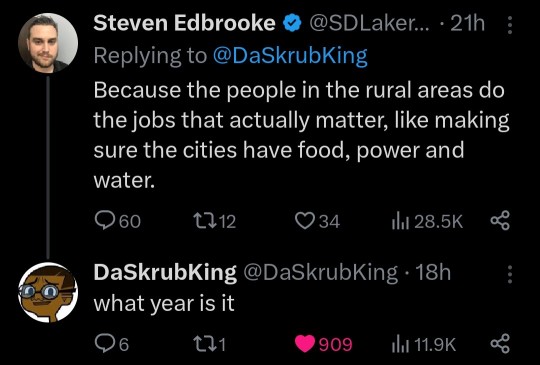#urban politics
Note
great info on the mayors / political leaders of New York - on the anti side, how about the absolute worst and most destructive , regressive, or otherwise harmful in its history?
This one is mostly covered by my first post about NYC mayors, where I discussed the mayors from Lindsay to the present.
However, I can talk about earlier mayors, even though most of them were bland non-entities. One major exception to this rule was Fernando Wood.
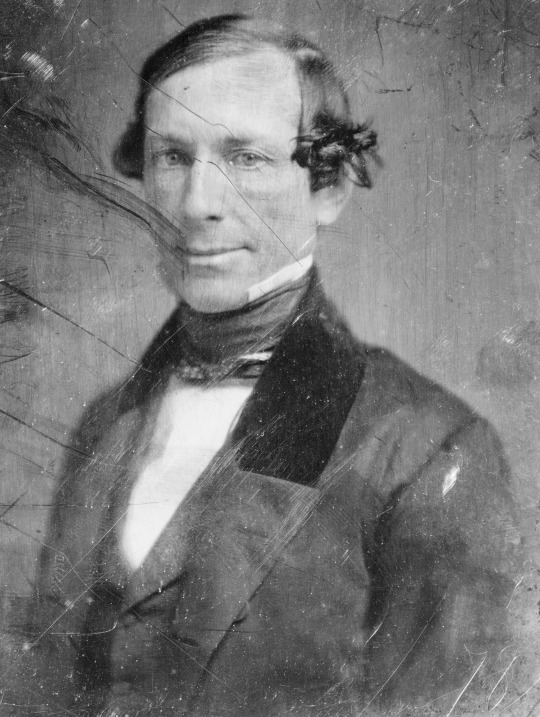
If there was one consistent theme of Wood's career - other than fraud (Wood stole from his bank and his own brother-in-law) and corruption - it was racism and violence.
From the very beginning of Wood's political career, he distinguished himself as the most pro-slavery man in New York Democratic politics, seeking the patronage of figures like John C. Calhoun and James Buchanan. When he shifted from Congress to mayoral politics, Wood went back and forth on what variety of pro-slavery politics he preferred (variously backing Douglas' popular sovereignty position and Buchanan's anti-Douglas position), but was a consistent enemy of John Van Buren's Free Soil Democrats, "Black Republicans," and abolitionism as a concept. Nevertheless, he managed to win election in 1854 with a bare third of the total vote.
Unlike more pliable Tammany mayors, Wood believed in "one-man rule" rather than collective pursuit of power, particularly when it came to direct mayoral control of the police force. While claiming to stand for home rule, democratic accountability, and efficiency, in reality Fernando sought to remove any commissioners on the police board who stood between him and turning the Municipal Police into his personal army. In the 1856 election, Wood gave the police the day off so that the Dead Rabbits gang could engage in street violence, physical intimidation of voters and poll workers, and theft of ballot boxes. Evidently Wood needed the help, because he won with a tiny plurality of the vote and ran well behind the Democratic ticket.
Wood managed to skate from any indictment from Election Day violence, but he had gone too far politically. Tammany broke with Wood, barring him from the building and promoting his political opponents to Federal patronage positions. The Republican-controlled state legislature enacted a new Municipal Charter that ordered a new election for 1857 and transferred control over public works to state commissioners appointed by the governor, and then a Metropolitan Police Act that abolished Wood's Municipal Police and replaced them with a new force under state commissioners.
Wood refused to accept the Metropolitan Police Act or the Municipal Charter as law, ordered his Municipal Police to physically remove state commissioners from government buildings, and when the new Metropolitan Police attempted to arrest him for selling the office of Street Commissioner for $50,000, Wood mobilized the Municipal Police against the "Black Republicans," leading to the "Great Police Riot" in which the two police forces met in open combat on the steps of City Hall. 53 people were injured, the state militia had to be called out to disperse the Municipal Police, and Wood was arrested (and then promptly released by a friendly judge).

New York City's gangs, with Wood's allies the Dead Rabbits very much in the lead, realized that with the city's two police forces at war (Wood had directed the Municipal Police to stop the Metropolitan Police from carrying out arrests, leading to frequent skirmishes), there was no state monopoly on violence to restrain them.
Amid a rising crime wave, the Dead Rabbits Riot broke out on July 4th - in which the Five Points gangs under the leadership of the Dead Rabbits invaded the Bowery and went to war with both the Bowery gangs and the Metropolitan Police. At its height, the riot involved 800-1,000 armed men and women who responded to police charges by building barrricades. Once again, the state militia had to be called out to quell the violence (at least 8 people killed and about 100 injured), although fighting would continue for another week. Ultimately, the courts ruled against Wood and the Municipal Police were disbanded.
In the election that year, Wood ran on a pro-slavery platform that praised the Dred Scott decision and Buchanan's pro-slavery policy in Bleeding Kansas, while attacking Republican efforts to expand voting rights to black New Yorkers. This race-baiting failed to distract voters from the violence and corruption of the Wood Administration, to say nothing of the Panic of 1857 which had sent unemployment in the city skyrocketing. To get rid of Wood, Tammany formed a fusion ticket with the Republicans and Know-Nothings that narrowly defeated the incumbent mayor.
Learning nothing from his defeat, Wood blamed the loss on a shadowy cabal of "Black Republicans" who had supposedly infiltrated Tammany Hall and formed his own rival Democratic machine out of Mozart Hall. In 1859, Wood once again used armed violence, this time to try to seize control of the State Democratic Convention from Tammany delegates. When this didn't work, Wood once again turned to racism in his campaign to get back into the mayoralty, running on a pro-slavery, anti-John Brown, and anti-abolition platform. He just barely managed to pull out another tiny plurality victory with only 38% of the total vote.
In his next term, Wood crossed the line from mere bigotry to open treason, calling for New York City to secede from both New York state and the United States (both controlled by "Black Republican" abolitionists, according to Wood) so that it could trade freely with the Confederacy. In 1861, Wood came in third place for re-election, finishing only a thousand votes behind both the Republican and the Tammany Democrat.
Despite (or arguably because of) his vocal pro-Confederacy stance and his supporters having caused the 1863 Draft Riots, Wood became the leader of the so-called "Peace" Democratic faction against the War Democrats. Lest you think that Wood was motivated by his abbhorence of war, Wood made the reasons for his opposition clear when he pushed for constitutional amendments to protect slavery, attacked War Democrats as "a white man's face on the body of a negro," and led the Congressional opposition to the passage of the 13th Amendment. In 1868, Wood was censured by Congress for his verbal attacks on the Reconstruction Acts. This censure accomplished nothing, and Wood continued his Congressional career unabated, which culminated in becoming Chairman of the Ways and Means Committee following the end of Reconstruction.
Wood had the reverse Midas touch of turning everything he touched to shit, such that even the few good things he supported - like home rule for New York City and public works jobs for the unemployed - became tainted by association with his violence and corruption. As far as I'm concerned, they should have done him like they did Vallandigham.
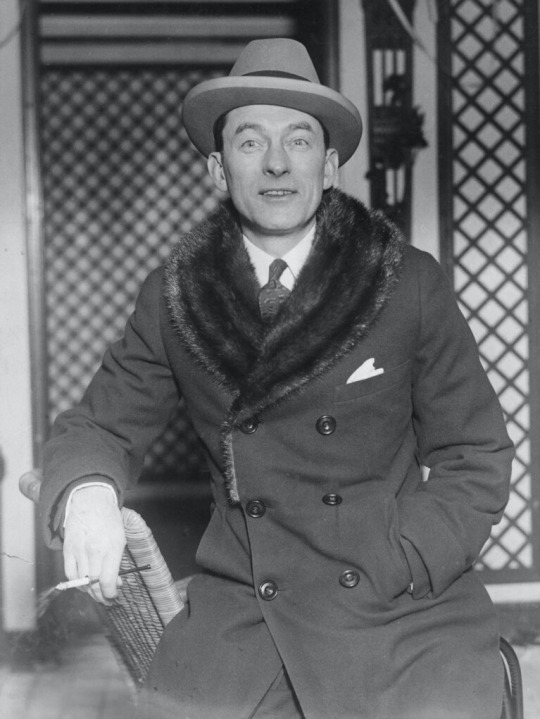
Compared to Wood, the faults of every other NYC mayor seem like the most minor of venal sins.
"Gentleman" Jimmy Walker was corrupt as fuck - supporting his lavish lifestyle by taking bribes from anyone with a pulse, selling the services of the NYPD to the mob, getting in bed with Arnold Rothstein, and perhaps having been connected to the murder of a whistleblower on police corruption and the disappearance of a New York Supreme Court judge - but he was also part of the progressive wing of Tammany Hall and a talented administrator (albeit one who only worked from 3-5 so as not to interfere with his more important time with showgirls, nightclubs, speakeasies, and boxing matches). He supported social welfare policies, opposed the KKK, built municipal waterworks and subway lines (albeit through corrupt contracts), and created the Sanitation and Hospitals Departments.
Similarly, William O'Dwyer was a typical Tammany politician who oversaw a massive police corruption scandal in Brooklyn, and ultimately had to flee to Mexico to avoid investigations from the Justice Department and the Brooklyn DA into his ties with organized crime, but he was in most other respects a typical if unremarkable mid-century NYC Mayor.
Shouldn't have raised the subway fare to ten cents, tho.
#history#u.s history#nyc history#nyc mayor#fernando wood#may he burn in hell#jimmy walker#william o'dwyer#tammany hall#political machines#urban politics
28 notes
·
View notes
Text
the census estimated that san francisco lost 2.7% of its population between 2020 and 2021, more than any other city, but it still has the most expensive rent in the country and prices keep rising. make it make sense
1 note
·
View note
Text







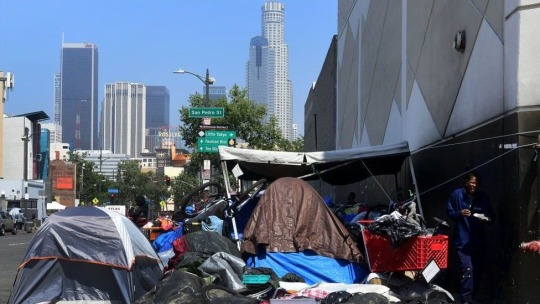


#4th of july#america#usa#transit#roads#car culture#political#multipost#urban planning#car dependency#not just bikes#moodboard#usa moodboard#american dream#urbanism#urban design#bike lanes
21K notes
·
View notes
Text
Ways to hide the supernatural from the mundanes:
"Everyone just forgets" too contrived? "Elaborate conspiracy" straining disbelief? "Fear of witch hunts" undermined by godlike powers? Don't worry! Here are plenty of unique explanations for your horror/urban fantasy setting's masquerade.
No-one knows about the supernatural because:
Everyone's distracted by the alien invasion that's unrelatedly happening at the same time.
Most people assume its a huge ARG. One of those deeply illegal ARGs with a massive death toll. Several small filmmakers are in jail for it.
Whenever someone tries to show proof of the supernatural, Elon Musk buys the social media platform that the information is put on and destroys it before anyone can see it.
People can only do supernatural things in windowless soundproofed rooms. That's just how magic works.
Everyone on earth forgot to charge their phones at the same time.
It's the 2020s. Everyone's too jaded to give a shit that a dragon just ate their house
There's not actually any mundanes left to find out about it, the last one became a supernatural being 3 months ago.
If you reveal the supernatural then the GM will cry.
Ix-nay on the upernatural-say! Do you want to be one to tell Azathoth The Nuclear Chaos his fast food worker disguise is shit??
If you find out about the supernatural a werewolf will eat you. That's not his job, to be clear. He just coincidentally stumbles onto literally every person who has concrete proof of the supernatural and eats them.
General financial problems for independent media.
For some reason everyone keeps yelling that acknowledging the hundreds of man-eating ghouls is a violation of their freedoms?
A very cute dog is nearby and everyone's looking at him rather then the warlocks.
I dunno. Probably brexit.
1K notes
·
View notes
Text

687 notes
·
View notes
Text
The Urbanist Nightmare That Is Our Current Reality
Watch and scroll as Youtube urbanist Not Just Bikes explains the concept of a STROAD; a literal blight on the US urban/suburban landscape that is also probably where you live…




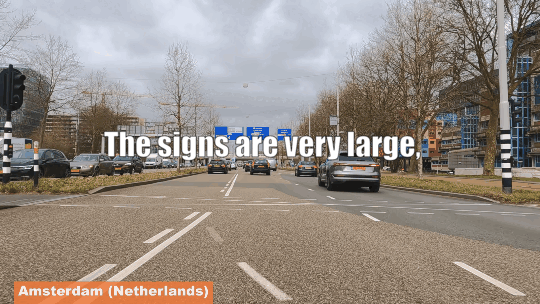






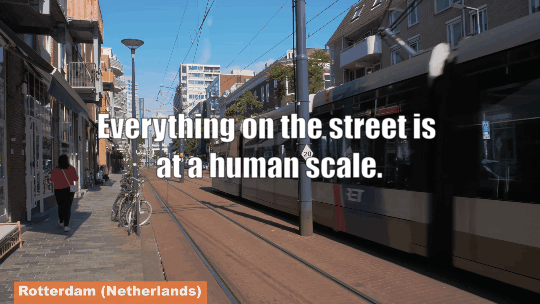









Watch the full glorious video HERE
#politics#the left#video#youtube#gifset#long post#not just bikes#orange pill#left urbanism#urbanism#progressive#progressive movement#urban sprawl#urban planning#suburbia
1K notes
·
View notes
Text
One anti-furry bill died, the other two wait to be heard
(This blog post was originally posted on the Otherkin News blog on DreamWidth by Orion Scribner on March 24, 2024.)
Content warnings: Rated G. An urban legend that describes an unsanitary situation. Sexism against transgender people, including attempts to prevent them from going to school or using facilities, and outing children to their parents. A straw-man version of furries being used to try to discredit transgender people, in a way that could cause trouble for people who identify as nonhuman.
So far this year, Republicans have proposed three pieces of legislation that are opposed to furries or people who identify as nonhuman. That’s something they started doing last year, inspired by an urban legend about litter boxes in public schools, which they made up in parody of transgender students asking to use school restrooms. We’ve been ending up calling these “anti-furry bills” as we keep track of them in our Otherkin News blog. Furry isn’t the accurate word, but it is the word that Republicans use in the urban legend and usually in the bills too. Every once in a while, I’m checking on the status of the bills, and trying to see if there are any new ones. Here is the update for this week.
1. Oklahoma House Bill 3084 (OK HB 3084) “Schools; prohibiting certain students from participating in school curriculum or activities; effective date.”
Background: We wrote about this bill in detail in a previous Otherkin News post. The bill says that furry students should be taken out of school by animal control. Its only sponsor (writer) is Justin Humphrey (he/him). This seems linked with his opposition to LGBTQ people, as well as his efforts to legalize animal fighting. Later, Jim Olsen (he/him) took over as principal sponsor of the bill. He proposed changing it to have the same text as an unrelated bill of his, one requiring public school classrooms to display the Ten Commandments.
Update: The bill’s current status hasn’t changed since our last update. It’s still at 25% progression toward becoming a law. Its text hasn’t changed from what it was originally, so it's still about furries.
2. Mississippi House Bill 176 (MS HB 176) “Gender dysphoria; require school personnel to notify parents of student who request to be referred to as different gender or nonhuman.”
Background: This was introduced at the same time as the first bill. As we previously wrote about it, the bill is mostly against transgender students in a way that could put them in real danger. It would require schools to out transgender students to parents, and to allow faculty to not accommodate any student who “identif[ies] at school as a gender or pronoun that does not align with the child's sex on their birth certificate, other official records, sex assigned at birth, or identifying as an animal species, extraterrestrial being or inanimate object.”
Update: This bill’s current status is dead! Hooray! It died in committee on March 3. When a bill dies, that means that it won’t progress toward becoming a law.
3. Missouri House Bill 2678 (MO HB 2678) “Prohibits students from engaging in ‘furry’ behavior while at school”
Background: We previously wrote about this bill. The bill says to pull students out of school for being furries or purporting to be animals. The bill’s only sponsor is Cheri Toalson Reisch (she/her). This appears to be connected with her opposition to transgender people as well as her efforts to undermine public schools in favor of charter schools.
Updates: This bill hasn’t changed or moved forward. It’s still the same as it was when it was introduced. A hearing hasn’t been scheduled for it, and it’s not on a House calendar.
-
About the writer: This blog post was written by Orion Scribner (they/them), who has been a community historian and archivist for more than ten years.
#litterbox hoax#litter box hoax#litter box urban legend#furry#otherkin#therianthrope#nonhuman#US politics#OK HB 3084#Oklahoma#transphobia#Mississippi#Missouri#MS HB 176#MO HB 2678#sexism#Otherkin News#rated G#unsanitary
159 notes
·
View notes
Text
Normalize updating laws and regulations that are no longer fit for purpose.
Normalize working with powerful enemies to find a solution where everybody wins.
Normalize mutual compromise.
Normalize collaboration over opposition.
Normalize civil discourse on divisive issues.
Normalize good faith and the principle of charity.
Normalize discussion of specific social, political, and economic issues.
Normalize advocacy for specific and implementable policy reforms to to tackle said issues.
Normalize imperfect solutions.
Normalize civic engagement.
Normalize public sector action.
Normalize incremental success.
Normalize improving society instead of destroying and rebuilding it from the ground up.
NORMALIZE PROGRESS!!!
#solarpunk#hopepunk#politics#political discourse#public policy#civic engagement#civic duty#georgism#transit#urban planning#accessibility#disability justice#disabled#healthy politics#policymakers#social justice#societal improvement#retain hope#societal progress#climate change#climate action#advocacy#trains#political activist#political action#activism#hanlon's razor#good regulations work#good faith arguments#good faith
225 notes
·
View notes
Text
No community anywhere would willingly choose to have a nearly 30 per cent office vacancy rate in its downtown core.
But faced with that problem, one Canadian city came up with a plan that is now being held up as a model for the rest of the country amid an ongoing national housing crisis.
Calgary has been busily working to convert underused office towers to residential housing, thanks to the city's one-of-a-kind incentive program for developers.
In just two years, the program has resulted in the approval of 13 office-to-residential conversion projects, with four more still under review.
Continue Reading
Tagging @politicsofcanada @abpoli
227 notes
·
View notes
Text
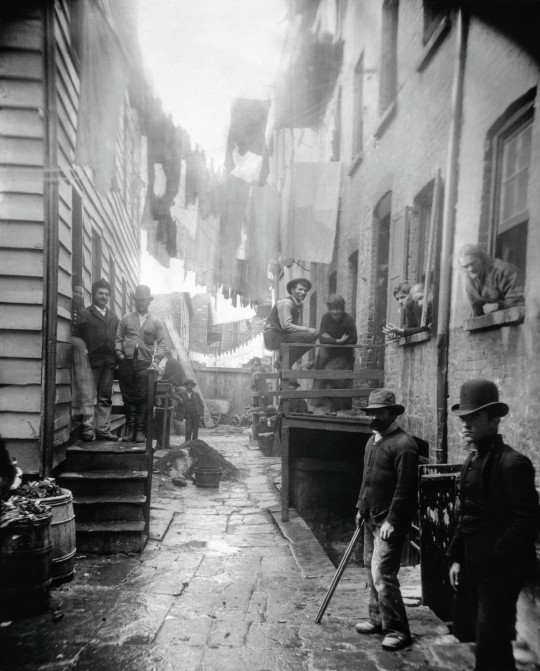
Jacob A. Riss Bandit's Roost, 59½ Mulberry Street, New York City. 1888.
#vintage#photos#people#street#19th century#b&w#urban#dark#history#crime#culture#city life#street photography#life#society#nyc#black and white photography#cityscape#humanity#politics#📸#gangs of new york#jacob riis
305 notes
·
View notes
Note
Who do you consider to have been some of the most important / formative mayors of New York?
This is a great question, and actually rather difficult to answer, because for the longest time both Tammany Hall and the Whig/Republican machine tended to prefer mayors who were dull but reliable non-entities. Starting in 1824, NYC was divided into wards that elected Aldermen and Assistant Aldermen to the Board of Aldermen and the Board of Assistants, who together made up the bicameral Common Council. This led to a system whereby the real political action was shunted to the local level, where the ward's Aldermen and the ward boss (and his precinct bosses) ran the show.

The downfall of Boss Tweed led to some reforms, with the bicameral Common Council replaced by a unicameral Board of Aldermen who were elected from larger State Senate districts or at-large, as part of the Whig Party's drive to dilute the power of Tammany's Irish Catholic voting base. This would change somewhat when the five boroughs were consolidated into Greater New York in 1898, which added the borough presidents and the Board of Estimate into the mix, and then again in 1901 and so forth.
However, the overall trend was a weak mayor system where real political power was fairly evenly distributed between aldermen (who were not only the city's legislatures but were also represented on the Board of Estimate through their President), the borough presidents, the mayor, and the comptroller.
So the major players in NYC politics tended not to be mayors:

Dewitt Clinton was incredibly transformational, but despite serving three terms as mayor his real mark on New York was as governor where he was the driving force behind the construction of the Erie Canal.
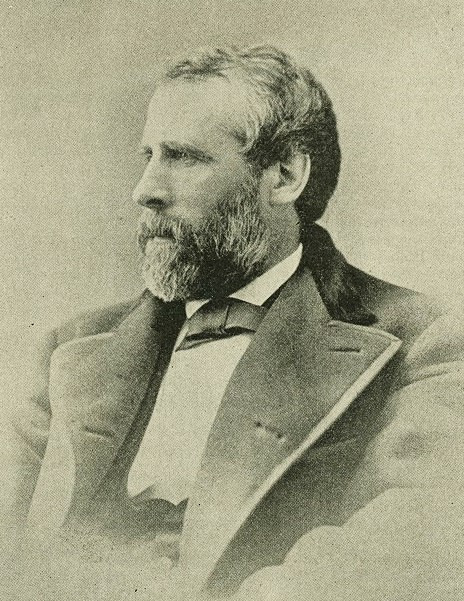
Andrew Haswell Green, the "Father of Greater New York," was responsible for the creation of Central Park, the New York Public Library, the Bronx Zoo, The Museum of Natural History, the Metropolitan Museum of Art, Riverside, Morningside, and Fort Washington Parks, Columbus Circle, and the consolidation of Greater New York - but he never served as mayor. The original Robert Moses, Green's political power came from his leadership of the Central Park Commission, the Greater New York Commission, a six-year stint in the Comptroller's office, and his position on a number of NGOs.
But if we're talking transformative mayors, there is one name that rises above all the rest: Fiorello goddamn LaGuardia.

There had been other reform mayors before him - Seth Low had established the Civil Service, John P. Mitchel brought scientific management to city government - but none of them had ever been able to get re-elected. Unlike the wealthy WASP reformers, LaGuardia knew how to beat Tammany at the ethnic politics game. Tammany's strength had always been in the Irish wards of the city, and while they had tried to divide-and-rule by promoting the naturalization of Russian and Polish Jews in return for them voting for Irish-American politicians in the Lower East Side while noticably neglecting the naturalization of Italians, the emergence of second-generation Jewish and Italian voters meant that this strategy had run its course.
Born to a Sephardic mother from Trieste and a lapsed Catholic father from southern Italy, Fiorello had an astonishing knack for transcending ethnic political boundaries in New York City - he spoke Italian, German, Yiddish, and Croatian, but he was also a progressive Republican and Episcopalian (which meant he could speak middle-class WASP too). LaGuardia won the 1933 mayoral election by bringing together a Fusion coalition that brought middle class German-American Republicans together with Italians and Jews, a coalition that he would expand in 1936 by bringing socialists, unions, and black voters together into the American Labor Party.
Over his twelve years as Mayor, LaGuardia was almost pathologically active (in a way that's oddly reminiscent of Henry II), transforming almost every aspect of New York City:
Jobs for the Unemployed:
LaGuardia's immediate mission as mayor was to fight the Great Depression that had had left a third of the City unemployed. He did this by forming an enduring alliance with FDR in which the New Deal would provide NYC with unpredecented level of federal support in exchange for NYC becoming the New Deal's model city - the first of the "Little New Deals." In his first hundred days in office, LaGuardia convinced FDR to give New York City a full 20% of the Civil Works Administration's work relief budget. This put 200,000 New Yorkers back to work - and this would only be the beginning of New York City's experiments with direct job creation.
As part of Fiorello LaGuardia's "Little New Deal," LaGuardia's new Parks Department employed 70,000 workers - paid for by CWA and later WPA money - to rebuild New York City's parks, constructing the Central Park Zoo and 60 playgrounds in the first year.
When the New Deal created the Works Progress Administration in 1935, LaGuardia once again lobbied FDR to put NYC first in line. This culminated in some 700,000 New Yorkers - a tenth of the city's entire population - getting jobs through the WPA and other New Deal programs. Together with the Parks Department, LaGuardia and Robert Moses would mobilize this workforce to completely transform the city.
Public Works:
This is where we have to discuss Fiorello LaGuardia's fateful decision to make Robert Moses his master builder. While Moses was in the process of becoming the "Power Broker" before LaGuardia - he had already been made president of the Long Island State Park Commission and chairman of the New York State Council of Parks - LaGuardia enabled his ascent to the heights of power by making him Parks Commissioner, Commissioner and then Chairman of the Triborough Bridge Authority, Commissioner of the NYC Planning Commission, and Chairman of the Emergency Public Works Commission.
The pact between them was simple: LaGuardia would give Moses the public appointments he needed to consolidate public works across the city and would steer New Deal public works money through Moses' agencies, and in exchange Moses would be LaGuardia's master builder with a mandate to "build it quickly and build it well." This was not an easy task, because Robert Moses was a political enemy of FDR and FDR tried to bar him from being given any WPA or PWA funding, but the mayor was able to persuade Roosevelt that it was more important that LaGuardia's proposed $1 billion public works program for NYC be carried at speed and administered efficiently.
As LaGuardia's workhorse, Moses would oversee almost all of NYC's public works, including the West Side Highway, the future FDR Drive, the Brooklyn Battery Tunnel, the Triborough Bridge, the LaGuardia and future JFK Airports, and Jones Beach Park, among others. LaGuardia would also construct the Sixth Avenue Subway line, the Queens-Midtown Tunnel and the Lincoln Tunnel without Moses (who was completely uninterested in mass transit and who always preferred bridges to tunnels).
In addition to these major projects, LaGuardia with and without Moses built the city's first municipal power plants, 37 sewage treatment plants, 9 fire houses, 142 elementary schools and 22 high schools, half of NYC's then-23 municipal hospitals, eight District Health Centers to provide preventative, specialized, and public health immunization care, and the first 14 of the City's public housing projects.
City Government:
To dismantle Tammany's patronage system, he began to massively expand the civil service to eliminate patronage jobs, and then when Tammany beat him on a government reform bill in 1934, he simply kept pushing. He pushed through the LaGuardia Reform Charter of 1938 that abolished the Tammany-dominated Board of Aldermen and replaced it with a City Council elected by Single Transferrable Vote, established the Board of Estimate as a central administrative body with powers over the city budget, public contracts, franchises, and land use - crippling Tammany's ability to raise money through graft and kickbacks.
To transform New York City into a "strong mayor" model, he undertook a campaign of transforming independent agencies scattered across the five boroughs into a system of unified citywide departments or public authorities that answered directly to the mayor and gave him unprecedented state capacity. In 1934, he formed the Parks Department and the New York City Housing Authority; in 1936 he formed the Department of Buildings and the City Planning Commission; in 1938, he restructured the Department of Welfare to run the city's social welfare programs and a massively expanded public hospital system; in 1940, he took over the IRT (operating the 1, 2, 3, 4, 5, 6), and the BMT and IND (operating the A, B, C, D, E, F, G, J, L, M, N, Q, R, W, and Z lines), unifying the NYC subway system for the first time.
To deal with police corruption, LaGuardia appointed Lewis Valentine to purge the NYPD so that the mayor could use it (and Thomas Dewey) in a crusade against the mafia's gambling, racketeering, and vice operations. This marked a rare period of honesty and effectiveness in the NYPD, although after WWII the system of protection rackets and mafia corruption would eventually re-establish itself.
Ironically, this exhaustive list of accomplishments really made it hard for later mayors to distinguish themselves, because mostly their task was completing, managing, or mis-managing the system that LaGuardia had built. After LaGuardia I would say that Robert Wagner Jr. (established public sector collective bargaining, created CUNY, Lincoln Center, Shakespeare in the Park, and dealt the killing blow to Tammany) and John Lindsay (see my previous post, but chiefly scatter-site housing, the civilian complaint review board, and the Knapp Commission on police corruption) are on my list of formative mayors.
After them, there have been long-serving mayors and good mayors, but unfortunately not the two combined.
#history#historical analysis#nyc history#nyc mayor#fiorello laguardia#tammany hall#urban history#urban studies#urban politics#political machines#new deal#robert moses#infrastructure
28 notes
·
View notes
Text
So, in Brazilian architecture, urbanism, and politics news, President Luiz Inácio Lula da Silva issued a decree to prohibit the use of materials, structures, equipment, and hostile construction techniques in open spaces for public use that have as their objective or result the removal of homeless people, elderly people, young people, children, people with disabilities, and other segments of the population.

The decree regulates item XX of the caput of art. 2nd of Law No. 10,257, of July 10, 2001, previously included by Law No. 14,489, of 2022, the Padre Júlio Lancellotti Law, named in honour of a priest who is a famous activist against hostile architecture.
(x)
#brazil#architecture#politics#urbanism#housing#brazilian politics#luiz inacio lula da silva#mod nise da silveira#image description in alt#translations and summaries
114 notes
·
View notes
Text



#brandon scott#francis scott key bridge collapse#baltimore mayor#racist attacks#diversity equity inclusion#wes moore#baltimore politics#political criticism#city leadership#baltimore community#urban challenges#racial discrimination#political backlash#community activism#baltimore bridge collapse#infrastructure disaster#francis scott key bridge#construction accident#rescue operations#salvage effort#port of baltimore#supply chains#federal government#reconstruction cost#insurance claims#liability
48 notes
·
View notes
Text



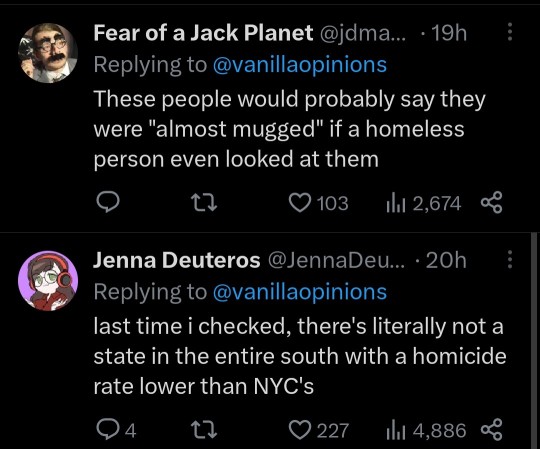






414 notes
·
View notes
Note
The Displacer Beast, a creature that evicts marginalized residents from their homes and flattens their homes to build a golf course and luxury resort. it displaces them
I know this was submitted as fantasy but there's actually a decent amount of evidence out there that these things actually exist. Wake up sheeple!
302 notes
·
View notes
